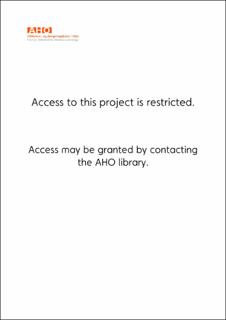| dc.description | Architecture promotes encounters and interactions. Without human interaction, architecture is reduced to form. By defining space, one effectively creates human relationships and encounters. Through the curation of spatial sequences, the mission of the architect is to plan, facilitate and optimize for good encounters and meetings. As small communities around Oslo sees continued growth, the infrastructure taking commuters in and out of the city is operating at maximum capacity. Expanding the capacity of the infrastructure, in an environmentally conscious society, makes alternative modes of transport relevant. The Oslo fjord is in itself an infrastructure with a long history of waterborne transportation of commuters and cargo. Commuting is a moving interlude between the stationary positions of being at home and at work. Two places connected by the state of being on the move. In the middle of this movement, with its own set of events, is the ferry terminal. Where land and sea meets. In the intersection between the small community and the city. Slow meets fast. Local meets visitor.
The proposed ferry terminal aims to create public space for the local community at Fagerstrand, by capturing movements in relation to the acts of arrival, departure and to the place itself. Through different treatments of the floor, the movements are given spatial properties as inhabitable lines traversing the situation. Where the movements converge, a large, circular canopy provides shelter, effectively creating a place for meetings. Its circularity allows movements through without giving direction. At the same time, the canopy breaks the movements, permitting interaction between the people moving in different tempos. Variance in material, color and texture reacts to the conditions in different ways. Such as the ceiling, a uniform surface, painted white, to give soft reflections of the life below. A brushed concrete floor, providing a safe surface to walk on. Painted walkways, sending people on their way. A pool collecting rainwater, before directing it into the fjord. As a result, the experience changes with the weather, time of day and the seasons, providing a diverse space for meetings to happen.
The primary purpose of a ferry terminal might seem obvious — to efficiently let passengers embark and disembark the ferry. The five minutes it takes to let people off and on the ferry, does not need to dictate every use of the space. By extending the transition from the ferry into the local community, the ferry terminal invites not only passengers. Others are welcomed in, be it to gaze at the sunset, go out with a boat, catch a fish, have a coffee. A future expansion of the ferry network in the Oslo fjord should mean not only shuttling people in and out of the capital, but creating valuable spaces for the local communities around the fjord. | en_US |










